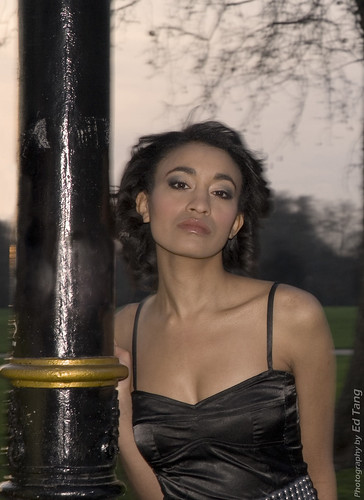1. Plan
Before a camera is even picked up at a photoshoot, plan. Plan, plan, plan! At the very beginning there is so much to consider and think about. A plan will help structure your photography so that you know what you are trying to achieve. Having that goal will make your life easier as you have a sense of direction - and being the director behind the camera, it would be mortifying if the director had no direction! The plan will be based on what the photoshoot is for. Is it for a client or for yourself? That will dictate the brief. If it's for a client, listen to what they want, and then plan around that. For example, if it's fashion then you have to consider what's being worn and what surroundings will fit in, and then consider portrait-orientated ideas in full length or 3/4 length. It's less likely for the camera to be in landscape-orientation for fashion. Other things to think of here would be what equipment to bring to achieve the goals you want, if you're shooting outdoors - what time of day would be best? This is important for lighting. And if it's indoors, what sources of light are you going to use? Window light, artifical light? Planning ahead will give you a sense of direction.
2. Build a rapport
This is where most photographers come unstuck. There's either no rapport or the person(s) you're taking images of are familiar to you that this is forgotten. You need to interact. Talking is a good way. Find out their interests - talk about what makes them feel comfortable. It's wise to read the newspaper or headlines on the internet on the morning of a job so you have topics to discuss. And once you start talking, keep talking. Even during the shoot, carry on your conversation with perhaps the odd interruption to tell them to lift their head or look a certain way. You might be asking me: "Why do all this?" Simple. A relaxed person in front of the camera makes for more genuine expressions and the time appears to fly faster. It can also be more engaging. Look at it from another way; which photographer would make you uneasy - someone who was fumbling around camera settings or unsure of how the lighting looked - or a talkative person who knew what they were doing? So try and relax your subject. I've heard of photographers who've used music to settle their models in studios. Anything goes - but aim to relax.
3. Avoid static postures
Once you have a working relationship, you need to be able to advise (or even control!) the person in front of the camera to get the right "look". I avoid the word "pose" - all will be explained shortly. Seasoned models will do it better than ordinary people, so let's assume we're dealing with ordinary people.
The likelihood if you ask someone to stand and "pose" is that they stand still and look straight into the lens, have a hand on their hip and pout, or have their hands in their pockets. All very well, but they're cliche and not dynamic. In the business this is what we call "static". There are times were a static posture will work, but on the whole, they lack a bit of magic.
4. Be dynamic

This is the opposite of static. Essentially the term "dynamic" is tagged to postures that are mid-movement. Here's an illustration on the left (click for larger). This was a charity "fashion show" and the models were all ordinary people who were doing it for fun. Too many were like the girl on the left. Walking and looking at where their feet were next going to land. As you can imagine, that doesn't make for pretty pictures. Being close to one side of the runway, I got interacting. Now I can't remember what I said to the pretty girl in the pink satin, but she took notice, strode towards me, looked into my lens and smiled. So the way she appears in this image could be called dynamic as she is visibly mid-stride, and you can picture her swinging her arms with her left foot moving forward.
Now in a more likely situation that you find that you need to get your subject dynamic, you can use this simple technique. Get them to stand one shoulder slightly forward, and turn their head and look towards your lens. Simple, yet dynamic.

5. Know how to flatter with the camera
Directing is all about making your subject look good. This means you should know your body and face types. There are certain ways to make people look better. With a never-ending list, here are some starting points to think about.
-Let's take the above idea of shoulder forward for dynamism. It will also make the body look slimmer, and is useful with subjects of heavy build.
-If you're taking an image with more than one person, and one is significantly shorter, get him/her to stand one step closer to your lens than the others. By simple perspective (aka compression) you will be able to iron out a little of the imbalance.
-Don't take portraits from a low viewpoint (unless for a specific creative purpose). You will capture the openings of the nostrils, which aren't flattering.
-If a person has a large nose, then avoid profile photos...as I've said, this list could go on. Maybe it'll be a topic for the future.
Hopefully with these 5 basic pointers, you've got a little more direction on how to manage people on a photoshoot. But to fully appreciate good direction, why not let yourself be the subject? Let someone else be behind the camera and take the other perspective. It can open up ideas on how you could communicate ideas across to your subjects in the future.
Until next time.
No comments:
Post a Comment